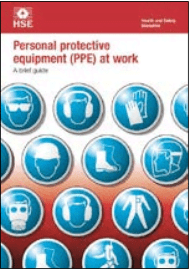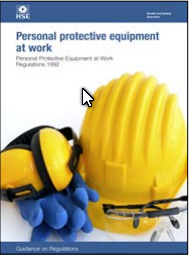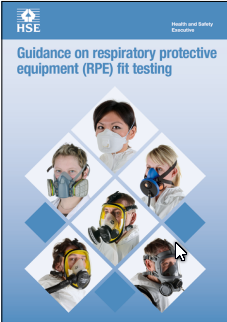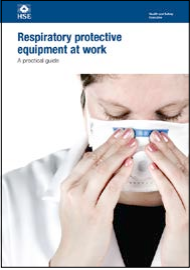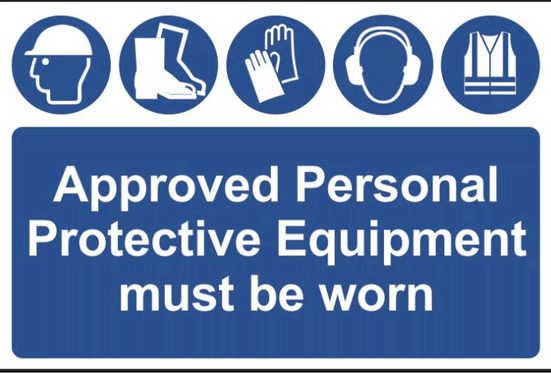|
|
Personal Protective EquipmentSend comments on this topic |
FREE QHSE Software Click <HERE> to Learn More |
||
QHSE Support >(Site Map) Health & Safety Guidance > PPE Equipment >
Personal Protective Equipment at Work
REMEMBER - The use of PPE must be considered as a last resort for the control of risks, to be used only after all other practicable measures have been taken.
What is Personal Protective Equipment (PPE)?
PPE is defined in the Personal Protective Equipment at Work Regulations (Personal Protective Equipment at Work (Amendment) Regulations 2022 ) as: ‘All equipment (including clothing affording protection against the weather) which is intended to be worn or held by a person at work which protects them against one or more risks to their health and safety’.
PPE includes equipment such as safety footwear, hard hats, high visibility waistcoats, goggles, life jackets, respirators and safety harnesses.
Waterproof, weatherproof, or insulated clothing is subject to the Regulations only if its use is necessary to protect employees against adverse climatic conditions that could otherwise affect their health and safety.
Why Wear PPE?
PPE has saved countless of limbs and lives. Not wearing PPE can place an individual or individuals at risk of:
• Loss of senses (normally, but not limited to sight and hearing)
• Burns and abrasions
• Crushed limbs
• Loss of body parts (digits, limbs etc)
• Chronic diseases
• Lifelong disabilities
• Brain damage
• Death (sometimes long and slow, as with asbestos diseases)
Where PPE is required it should be identified in a as part of a task based risk assessment with the specific requirements for PPE identified.
In the UK The Personal Protective Equipment at Work Regulations 1992 (Personal Protective Equipment at Work (Amendment) Regulations 2022 ) place a duty on every employer to ensure that suitable personal protective equipment is provided to employees who may be exposed to a risk to their health or safety while at work.
There are also a number of other UK regulations detailing specific requirements for the PPE:
• Control of Lead at Work Regulations 2002 (regulations 2, 6. 8 and 12)
• Ionising Radiations Regulations 1999 (regulations 8, 9. 10, 18, 34 and 41)
• Control of Asbestos at Work Regulations 2002, (regulations 2, 10, and 22) also see our help page
• Control of Substances Hazardous to Health Regulations 2002, (2, 7, 9, and 13) also see our help page
• Construction (Head Protection) Regulations 1989 (regulations All)
• The Control of Noise at Work Regulations 2005, (5, 6, 7, 8, 10 and 11) also see our help page
Further guidance on the PPE
|
INDG 174 (withdrawn - archive copy) Personal protective equipment (PPE) at work |
L25 Personal protective equipment at work (Personal Protective Equipment at Work (Amendment) Regulations 2022) |
|
INDG 479 - Guidance on respiratory protective equipment (RPE) fit testing |
HSG 53 - Respiratory protective equipment at work: A practical guide |
|
|
|
Help file v2.276.407 : QHSE Support - Website On Safe Lines
onsafelines.com QHSE Software 2025 : Webmaster: Brian G. Welch MSc(QHSE), NVQ4(OH&S), CMIOSH



